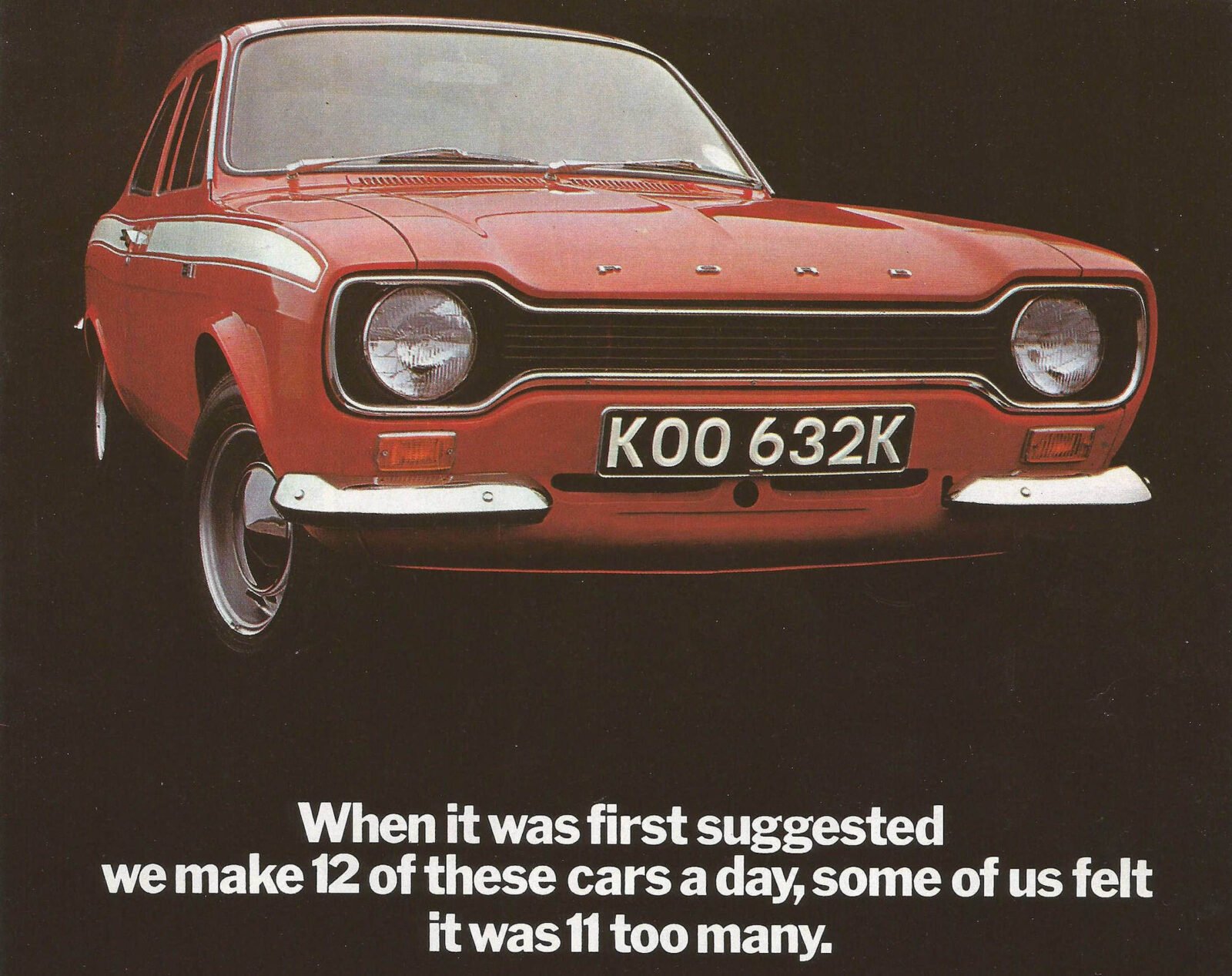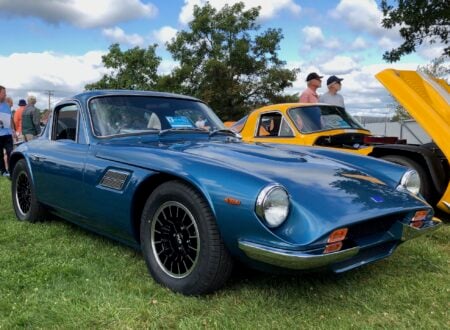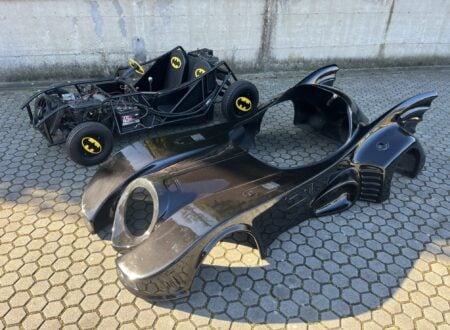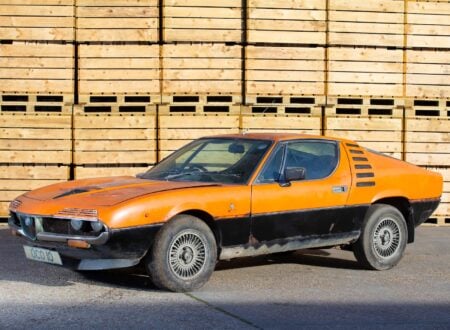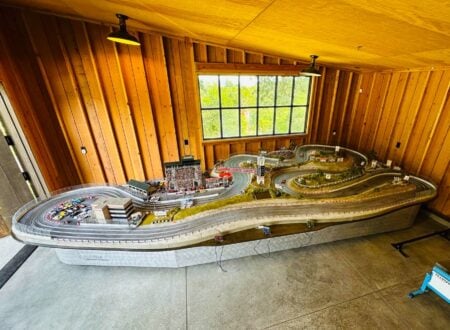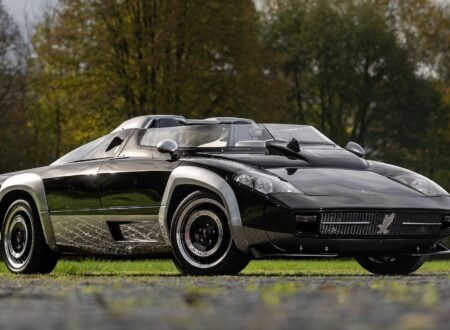Introduction: Exit the Anglia, Enter the Ford Escort Mk 1
The Ford Escort Mk 1 is one of the most beloved British cars of its generation with styling that quickly embedded itself into the British and European pantheon of humble commuter cars that made good on the race tracks of the Continent, not to mention the circuits of Australia, South Africa, New Zealand and further afield.
Unfortunately the first car I ever drove was a Ford Anglia. They were an unexciting utilitarian automobile built with solid British pie and chips engineering. But they were the right car for their time in post-war Britain, easy to drive, easy to maintain, and inexpensive to run.
It’s worth remembering that before the Second World War most people in Britain did not own a car, and did not have a driver’s license. It was in the post-war period that private car ownership really began to be established, and for many people a Ford Anglia would be the first new car they would own.
In addition to many middle class British people being able to aspire to own a motor car in the 1950’s and 1960’s was an additional influence, television. Television brought with it various dramas and sport, one of those sports being motorsport. For many the first exposure they had to motorsport, be it track racing or rallying, was seeing it on the “telly”.
Becoming interested in motorsport, and becoming able to own a motor car, the next obvious step was to own a car that featured in the motorsport events on the telly. The Morris Mini paved the way being a car that paradoxically went from being a small and affordable step up from a three wheeled bubble car, such as the BMW Isetta, to being a “real” car with four wheels that went on to dominate rallying and racing.
Ford saw the successes of the Mini, with sales being driven ever upward by motorsport successes, and decided they needed to build a car that could beat the Mini, and bring sales back to Ford. It was time for the humble Anglia to exit, and for something new and exciting to enter.
Ford’s first foray into creating a motorsport oriented ordinary road car in post war Britain was the Lotus Cortina. The original Ford Cortina was designed by American Roy Brown Jr., who had previously been the designer of the Edsel, and the 1955 Lincoln Futura show car that later became the Batmobile.
British racing and sports car maker Lotus had been working on developing a Twin Cam version of the Ford Kent engine, both in 997cc and 1,340cc configurations. This engine was then fitted into the Lotus Elan sports car which was made famous as the sports car driven by Mrs. Emma Peel (Dianna Rigg) in “The Avengers” television series.
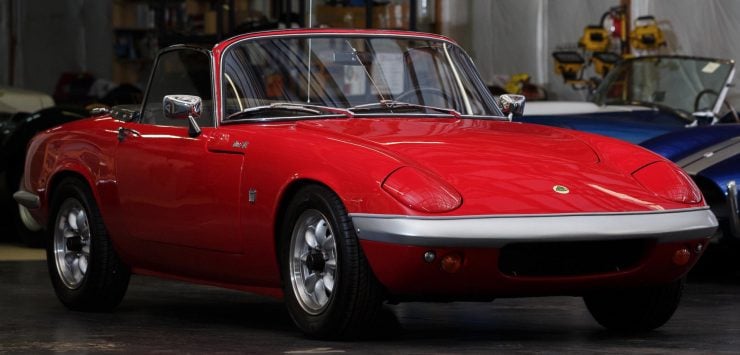
That Twin Cam engine was bored out to further increase its capacity to 1,557 cc, and around that time Walter Hayes from Ford approached Colin Chapman of Lotus with a view to having Lotus fit that engine into a thousand Ford Cortinas so they could make Group 2 homologation rules.
The resulting Lotus Cortina had a swag of Lotus goodies including some aluminum body panels, suspension significantly tweaked by the Lotus mavens, and that Twin Cam engine pushing out 105 bhp matched to a Lotus Elan close ratio four speed gearbox.
To cut a long story short the Lotus Cortina became a must have car for many enthusiasts and shifted the popular view of Ford cars from being a utilitarian mode of transport to being a force to be reckoned with in motorsport.
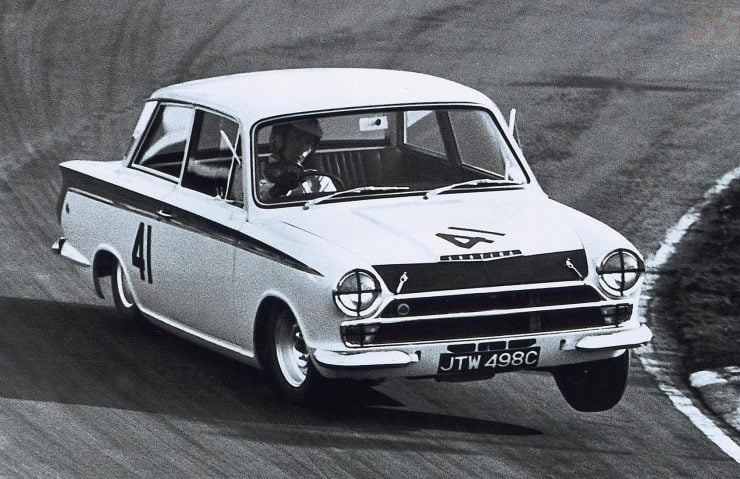
The Lotus Cortina Moves Over for a Twin Cam Ford Escort Mk 1
With this background Ford knew that the car they needed to create had to fill the utilitarian shoes of the Ford Anglia, yet also be something that could be an even better motorsport icon than the Lotus Cortina. These were big shoes to fill but it was a do-able project.
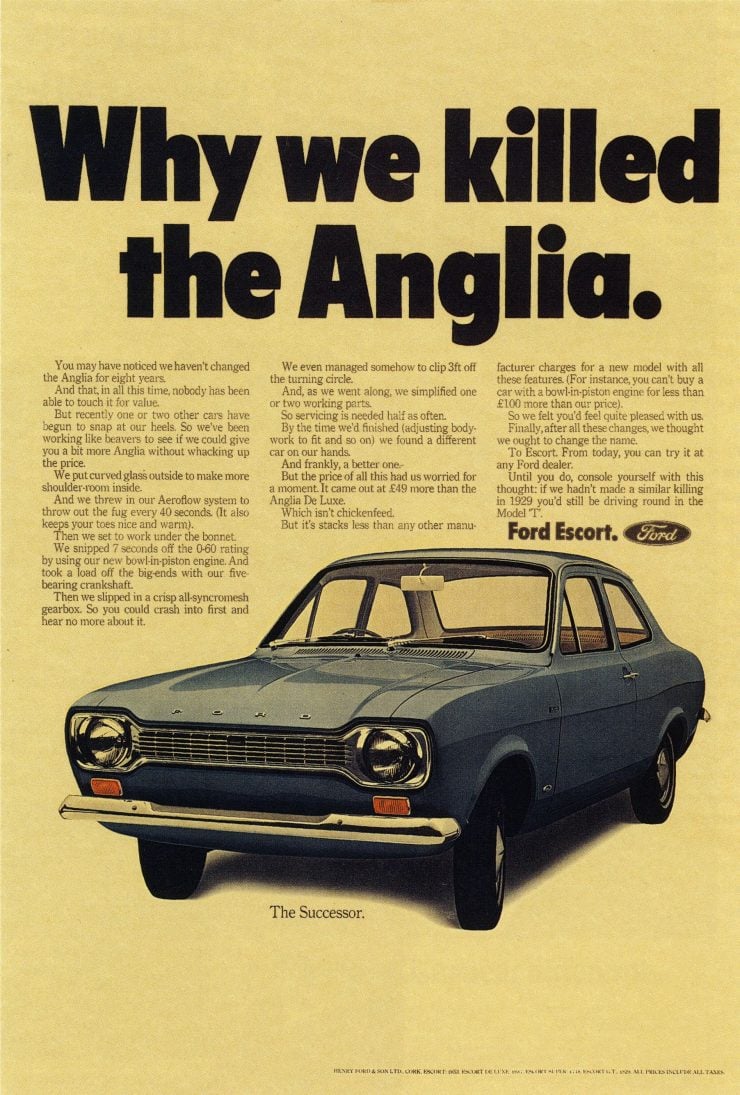
The Ford Escort Mk 1 was designed from the ground up to keep the price of the new car in the same range as the old Anglia, but to build it with both the engineering and stylish aesthetics to be able to turn it into a motorsport legend, much as the Mini had become.
Ford understood that the appearance of the car would be an important selling point and so they opted for the tried and true “Coke Bottle” style as proven in the USA, matched with a “dog bone” front grille.
Underneath that very 1960’s body Ford put MacPherson Strut front suspension with proper rack and pinion steering to lay the foundation for excellent handling, but kept to a traditional semi-elliptic leaf springs with live axle at the rear rather than running the risk, and expense, of attempting a fully independent rear suspension.
Although a fully independent rear suspension can provide significant improvements in handling, especially for a rally car, it can also create problems with uneven tire wear when loaded. Conversely a live axle system can be tweaked up by converting it to coil springs and having the rear axle positively located with rods (as the Aston Martins of the 1960’s did) to build a high performance model.
Ford also, wisely, stayed with a conventional front engine driving the rear wheels layout rather than moving to front wheel drive. This was partly to ensure better handling, but also to ensure ease of maintenance.
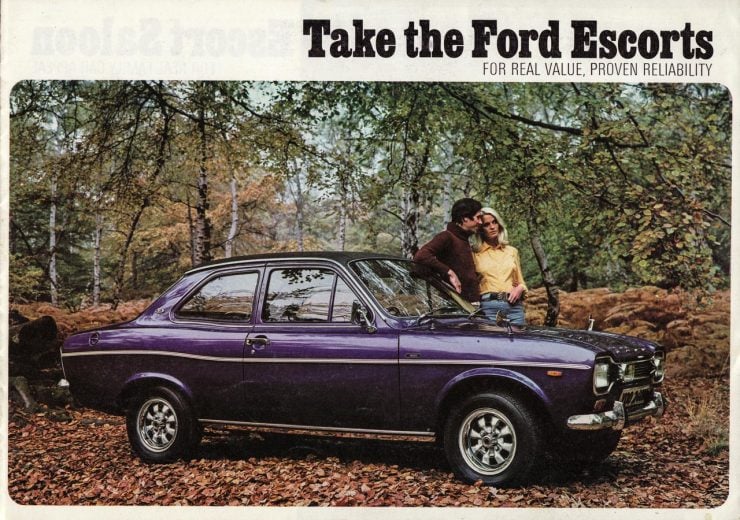
The engines fitted in the new Escort were primarily the Ford Kent Crossflow in 1.1 liter and 1.3 liter versions. This of course being the same engine that Lotus had already done so much development work on, and the one that, in Lotus Twin Cam form, had powered the iconic Ford Lotus Cortina and Lotus Elan.
A smaller 940cc engine was also offered in some export markets where regulations favored engines below 1 liter. Even in their base standard tune the 1.1 and 1.3 liter engines gave the Ford Escort much improved performance by comparison with the old Ford Anglia which didn’t so much “accelerate” but rather “gained momentum” with a standing to 60mph time somewhere north of twenty seconds or so.
Production of the new Ford Escort Mk 1 began in 1967 and Ford made it clear that they were going to use the car to target not just the UK market, but also Europe, by showing the car at the Brussels Motor Show in 1968.
Not only was the new Escort shown at the Brussels Motor Show but Ford began making the European cars on the Continent, initially at Genk in Belgium and then later at a new plant at Saarlouis in West Germany (This was still the height of the Cold War and Germany was still divided into West and East).
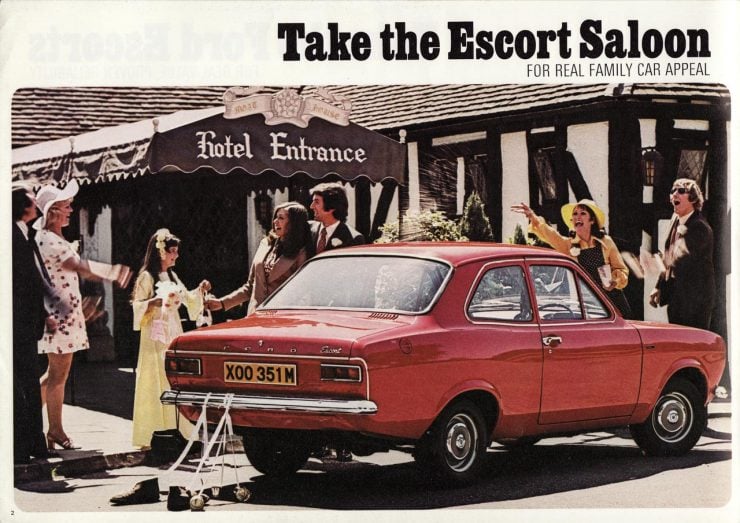
With the Escort needing to fulfill the utilitarian market niche of the Anglia, Ford wasted no time in releasing a three door estate car in March 1968 quickly followed by the panel van in April of the same year. The panel van and estate car featured slightly more heavy duty rear leaf springs, brakes and clutch, while the engine options remained the same.
1969 saw the introduction of a four door version. The Escort needed not only to replace the Anglia but also needed to take over from the Cortina in part because the new 1970 Cortina was to be a somewhat larger car and so had moved into a different market segment. The four door version turned the sporty Escort into a more sedate and practical family car.
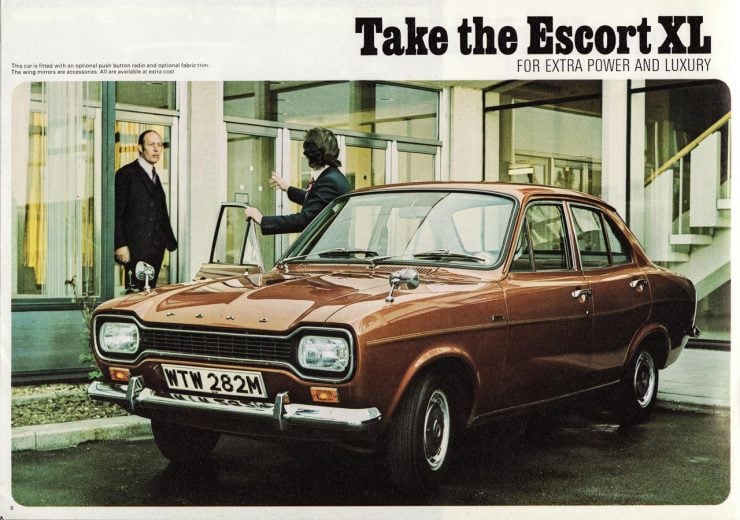
The Escort was also made in different levels of luxury, or lack thereof. Initial production was of a “Deluxe” model, which was really the base model, having rubber floor mats and circular headlights. The next level of trim was the “Super” which featured rectangular headlights, carpets, improved instrumentation in the form of a coolant temperature gauge, and a cigar lighter for those with Churchillian propensities. This progressively led to other levels of trim depending on the model year and target market.
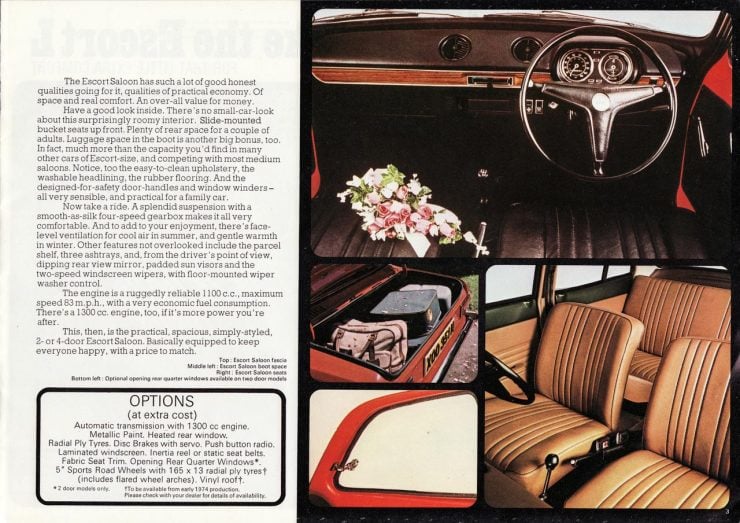
Ford wasted no time in putting a sporting version of the Ford Escort out into the marketplace with their introduction of the Escort 1300GT in 1968. This car featured the 1.3 liter Kent OHV engine with some performance tweaking that included a single Weber carburetor, the engine producing a not at all eye-watering 75hp.
The suspension was tuned for sporting use and the instrumentation made more extensive with inclusion of a tachometer, oil pressure gauge, coolant temperature gauge, and battery charge meter. The 1300GT also had a speedometer so the driver would know just how far over the speed limit he/she was when pulled over by the police.
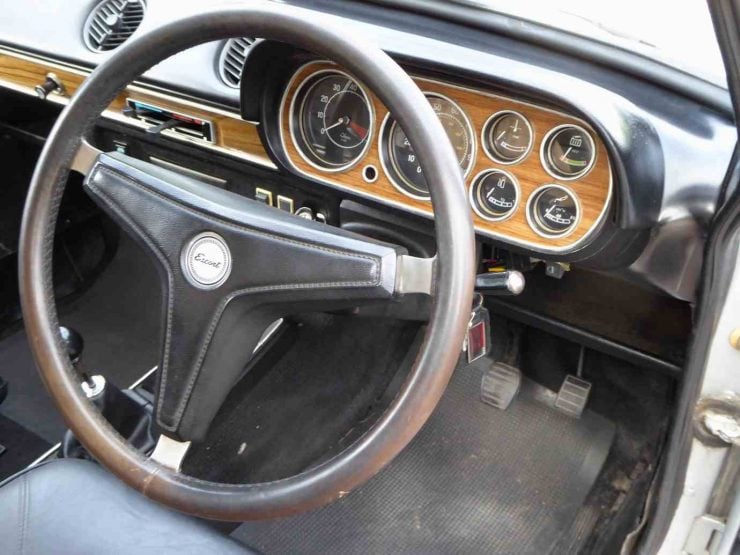
The 1300GT was a car that really showed off the Escort’s sporting potential with the ultra positive rack and pinion steering and sports suspension providing an excellent driving experience. The 1300GT was also a marketing strategy that gave the new Ford Escort Mk 1 a sporting reputation. It made the Escort a competitor with the likes of the Mini Cooper and set the stage for the real motorsport competition that was about to take place.
Not only that but the “dog bone” front styling actually looked perfectly at home with a couple or four rally driving lights hung on it.

The Ford Escort had been designed to be a Mini killer. It was time to go and kill some Minis.
The Ford Escort Mk 1 Twin Cam and the 1300GT
Just as the Lotus Cortina had been fitted with the 1.5 liter Twin Cam Lotus modified Kent engine that was used in the Lotus Elan so it didn’t take long for Ford’s team to shoehorn one into an Escort. The first experimental job was done under the direction of Henry Taylor at the Ford competition department at Boreham.
The end result was not at all boring but was all that the guys in the competition department had hoped it would be. Ford management were persuaded of the need to build 1,000 of these little Lotus engined hot-rods to meet Group 2 homologation and lo and behold the Escort Twin Cam was born and set on track to take the world by storm.
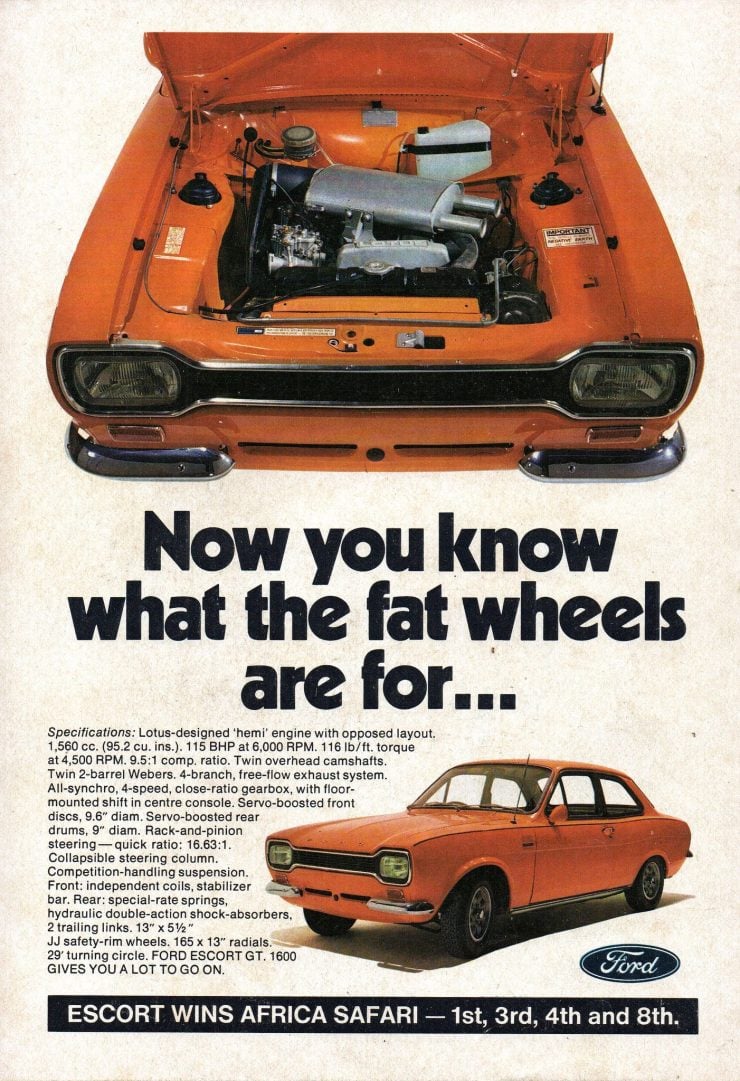
The body shell required some changes from stock standard including modifying the transmission tunnel to allow a more bulky ZF gearbox to be fitted in, and suspension more suited to racing and rallying, most of which came from the Lotus Cortina, complete with Atlas axle. The Twin Cam engine produced 106hp @ 6,000rpm and propelled the little Escort to 113mph.
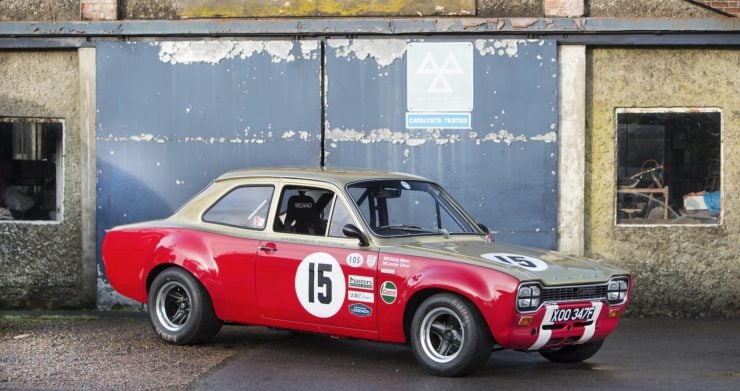
On the race track both the Twin Cam and the racing versions of the 1300GT, complete with full coil spring suspension and a fuel injected cross-flow version of the 1,298cc Kent engine producing a rather satisfactory 145bhp were fielded. These cars were only to be the beginning however as Ford already had bigger plans for the Escort, plans that would see their Advanced Vehicle Operation (AVO) established in South Ockendon, Essex.
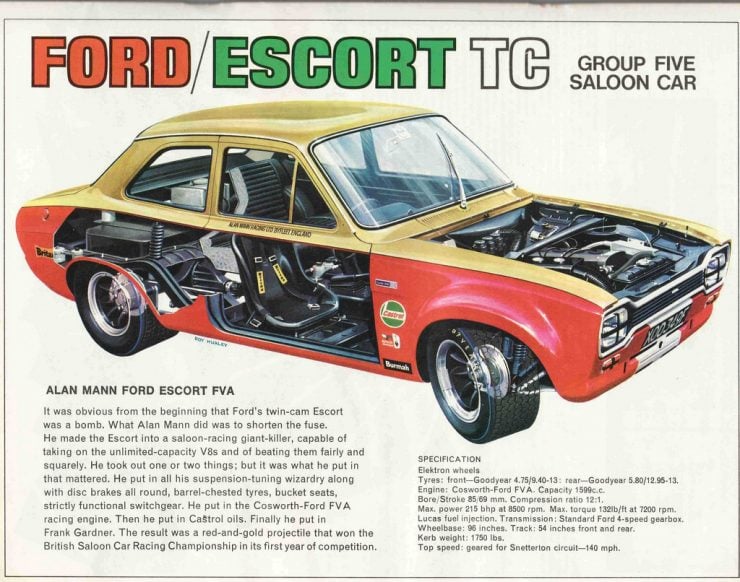
The Escorts got straight into the winning business by taking the Circuit of Ireland Rally in 1968, and by 1970, on the race track, the Escorts racked up victories in the British, Belgian, German and South African Saloon Car Championships, and had taken the European Rally Manufacturers Championship two years running.
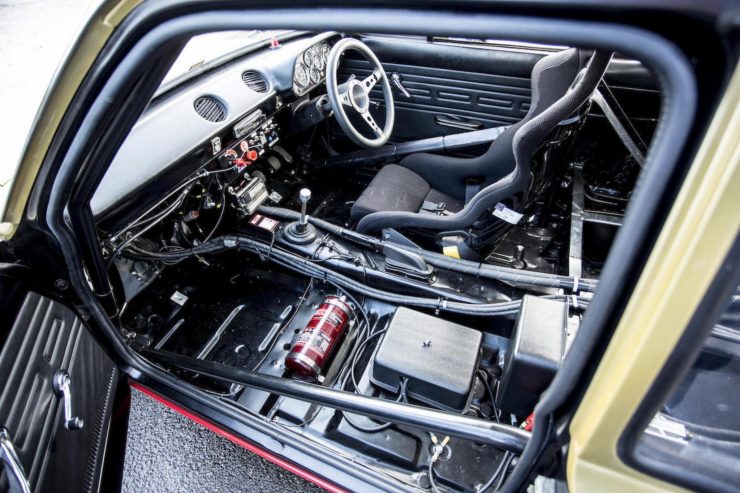
The RS1600 Ford Escort Mk 1
The first generation of Ford Escorts had been bringing home the bacon in terms of competition successes despite the rate of failure for the 1300GT racing engine, which prevented those cars from racking up quite as many victories as might have been possible if they’d been able to finish all their races.
But motorsport tends to be a bit of an arms race and Ford were working on a new engine to make their winner into a little world beater. The new engine, by Cosworth, was the 1,599cc DOHC 16 valve Belt Drive Type A (BDA). This engine was slotted into an Escort Twin Cam body complete with its Lotus Cortina running gear and transmission to create the RS1600 (the “RS” standing for “Rally Sport”).
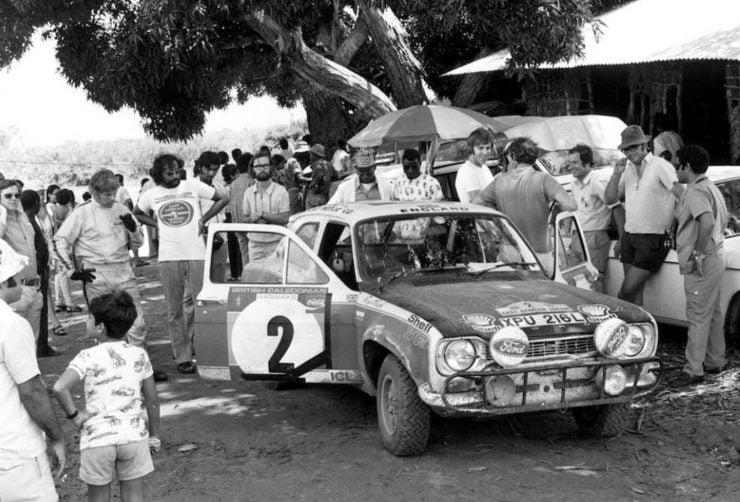
The RS1600 could do standing to 60mph in 8.9 seconds and had a top speed of 113mph. It became one of the most successful rally cars of the early 1970’s with wins in a number of events including the RAC Rally, and victory in the rugged East Africa Safari Rally in 1972.
The Ford Escort Mk 1 Mexico
A series of World Cup marathon car rallies were held, beginning in 1968 with the London to Sydney rally in 1968. In 1970 the rally was to be run from London to Mexico City. Ford prepared a number of cars for this event with no less than five finishing in the top ten. These cars were built for an endurance rally and so they were fitted with an 1,850 cc Kent pushrod engine, but were otherwise much like the RS1600. The Ford Escorts finished the event placing 1st, 3rd, 5th, 6th and 8th which means they not only won the event but completed it with more cars in the top ten than any other manufacturer.
This was such a great result that Ford decided to make a production Ford Escort to commemorate their success and so the Ford Escort Mexico was born.
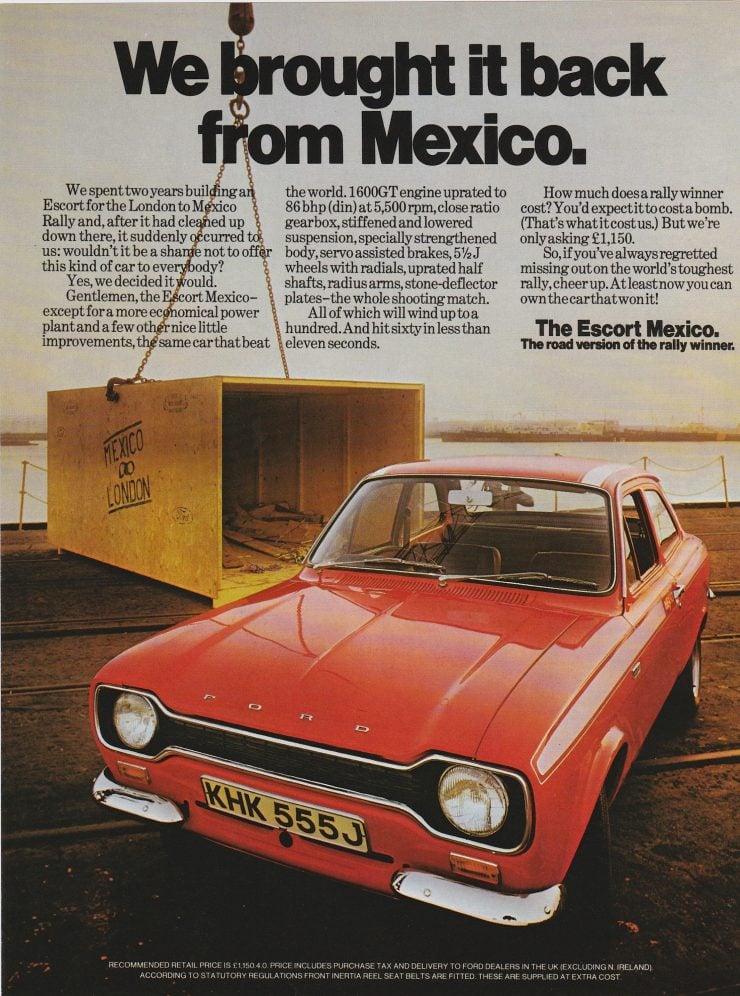
The Ford Escort Mexico was not the same as the rally winning cars but was fitted with a more road suitable 1,599cc pushrod Kent engine producing a not so rally winning 86bhp. The Escort Mexico would do standing to 60mph in 10.7 seconds and was capable of a top speed of just touching 100mph. Fuel consumption was rather better than for the rally cars however at an affordable twenty eight miles to the Imperial Gallon.
The AVO RS2000 Ford Escort Mk 1
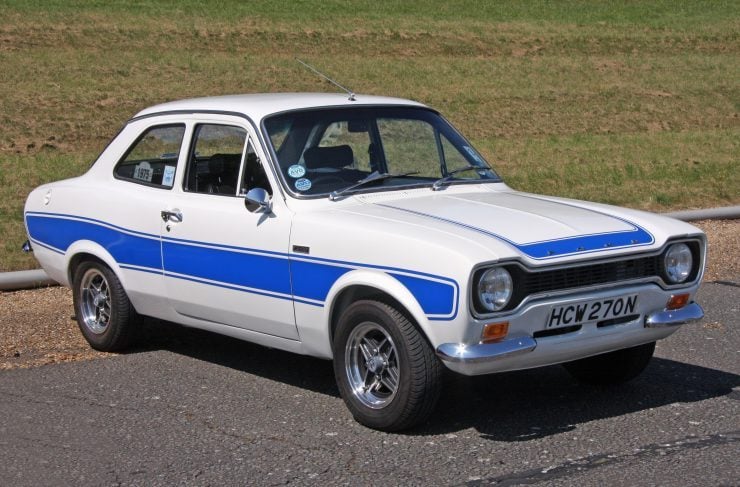
Perhaps the greatest of the much loved performance Ford Escorts was the RS2000 which was created by Ford’s Advanced Vehicle Operation in July 1973. These cars were fitted with a 2 liter OHC Ford Pinto engine mated to a German transmission.
The RS2000 were made alongside the RS1600 cars but were a tad quicker being able to do a standing to 60mph in 9 seconds and providing a top speed of 110mph. Not only was the RS2000 a quicker car but it delivered that extra power in a more smooth and refined way than the RS1600, and thus it became known as a great road car, something that holds true even into this twenty-first century.
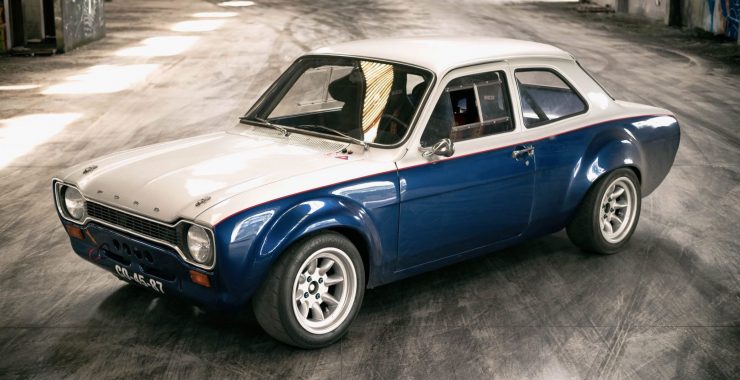
Conclusion
The Ford Escort Mk 1 was a car that somehow managed to live a respectable Dr. Jekyll, and a wild-eyed Mr. Hyde life, all at the same time. The Escort proved to be an excellent replacement for the utilitarian Ford Anglia, being made in sedan, estate car, and panel van body styles: and yet it was also able to be made as a little rally winning, Mini eating, powerhouse.
It could offer comfort, economy, and utility: but it could also provide a ride on the wild side. It was this morphing together of a well thought out drivers’ car with the ability to make it with a personality to suit different owner’s needs that helped make it everything the Mini wasn’t, except “cool” as in Carnaby Street Pop Star “cool”: the Mini still keeps that crown.
But all the other crowns the Mini had for a while the Ford Escort quietly stole away to become one of the most memorable driver’s cars of the 1960’s and 1970’s. Even in lower powered standard mundane trim they were a fun bucket of bolts to drive around in.
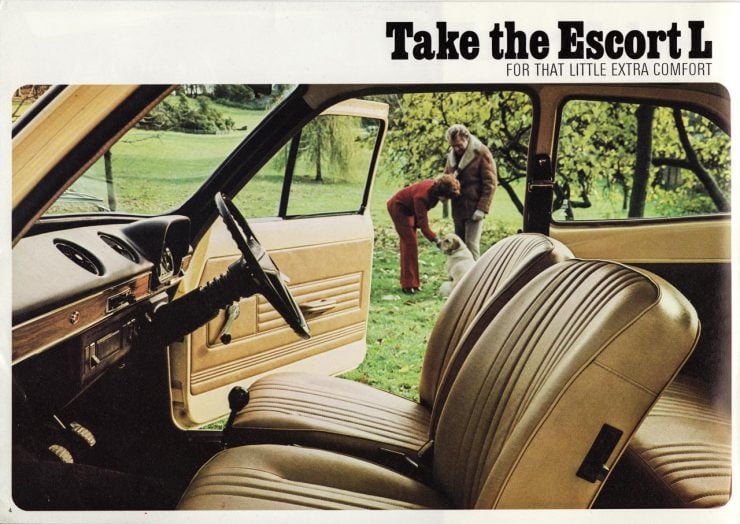
Photo Credits: Ford, Bonhams, Brian Snelson, Charles Eveson

